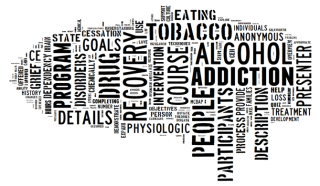Many people do not understand why or how other people become addicted to drugs. It is often mistakenly assumed that drug abusers lack moral principles or willpower and that they could stop using drugs simply by choosing to change their behavior.
In reality, drug addiction is a complex disease, and quitting takes more than good intentions or a strong will. In fact, because drugs change the brain in ways that foster compulsive drug abuse, quitting is difficult, even for those who are ready to do so. Through scientific advances, we know more about how drugs work in the brain than ever, and we also know that drug addiction can be successfully treated to help people stop abusing drugs and lead productive lives.
Drug abuse and addiction have negative consequences for individuals and for society. The implications of drug abuse and addiction also include family disintegration, loss of employment, failure in school, domestic violence, and child abuse.
What Is Drug Addiction?
Addiction is a chronic, often relapsing brain disease that causes compulsive drug seeking and use, despite harmful consequences to the addicted individual and to those around him or her. Although the initial decision to take drugs is voluntary for most people, the brain changes that occur over time challenge an addicted person’s self control and hamper his or her ability to resist intense impulses to take drugs.
Fortunately, treatments are available to help people counter addiction’s powerful disruptive effects. Research shows that combining addiction treatment medications with behavioral therapy is the best way to ensure success for most patients. Treatment approaches that are tailored to each patient’s drug abuse patterns and any co-occurring medical, psychiatric, and social problems can lead to sustained recovery and a life without drug abuse.
What Happens to Your Brain When You Take Drugs?
Drugs contain chemicals that tap into the brain’s communication system and disrupt the way nerve cells normally send, receive, and process information. There are at least two ways that drugs cause this disruption:
(1) by imitating the brain’s natural chemical messengers and
(2) by overstimulating the “reward circuit” of the brain.
Some drugs (e.g., marijuana and heroin) have a similar structure to chemical messengers called neurotransmitters, which are naturally produced by the brain. This similarity allows the drugs to “fool” the brain’s receptors and activate nerve cells to send abnormal messages.
Other drugs, such as cocaine or methamphetamine, can cause the nerve cells to release abnormally large amounts of natural neurotransmitters (mainly dopamine) or to prevent the normal recycling of these brain chemicals, which is needed to shut off the signaling between neurons. The result is a brain wash in dopamine, a neurotransmitter present in brain regions that control movement, emotion, motivation, and feelings of pleasure.
The result of sustained consumption is a lessening of dopamine’s impact on the reward circuit, which reduces the abuser’s ability to enjoy not only the drugs but also other events in life that previously brought pleasure. This decrease compels the addicted person to keep abusing drugs in an attempt to bring the dopamine function back to normal, but now larger amounts of the drug are required to achieve the same dopamine high—an effect known as tolerance.
Brain imaging studies of drug-addicted individuals show changes in areas of the brain that are critical to judgment, decision making, learning and memory, and behavior control. Together, these changes can drive an abuser to seek out and take drugs compulsively despite adverse, even devastating consequences—that is the nature of addiction.
Why Do Some People Become Addicted While Others Do Not?
No single factor can predict whether a person will become addicted to drugs. Risk for addiction is influenced by a combination of factors that include individual biology, social environment, and age or stage of development. The more risk factors an individual has, the greater the chance that taking drugs can lead to addiction. For example:
- Biology. The genes that people are born with—in combination with environmental influences—account for about half of their addiction vulnerability. Additionally, gender, ethnicity, and the presence of other mental disorders may influence risk for drug abuse and addiction.
- Environment. A person’s environment includes many different influences, from family and friends to socioeconomic status and quality of life in general. Factors such as peer pressure, physical and sexual abuse, stress, and quality of parenting can greatly influence the occurrence of drug abuse and the escalation to addiction in a person’s life.
- Development. Genetic and environmental factors interact with critical developmental stages in a person’s life to affect addiction vulnerability. Although taking drugs at any age can lead to addiction, the earlier that drug use begins, the more likely it will progress to more serious abuse, which poses a special challenge to adolescents. Because areas in their brains that govern decision making, judgment, and self-control are still developing, adolescents may be especially prone to risk-taking behaviors, including trying drugs of abuse.
Physical Warning Signs
- Blood shot eyes, uncharacteristically broad and flattened out pupils
- Sudden changes in appetite or sleep pattern
- Deterioration of physical appearance and habits of personal grooming
- Tremors, slurred speech
- Impaired co-ordination
Prevention Is the Key
Drug addiction is a preventable disease. Education and outreach are a key in helping youth and the general public understand the risks of drug abuse.
Other Recommendations:
http://edtimes.in/2016/11/your-friends-health-the-line-between-concern-and-control/
http://edtimes.in/2016/03/madonna-and-her-new-fiasco/

































